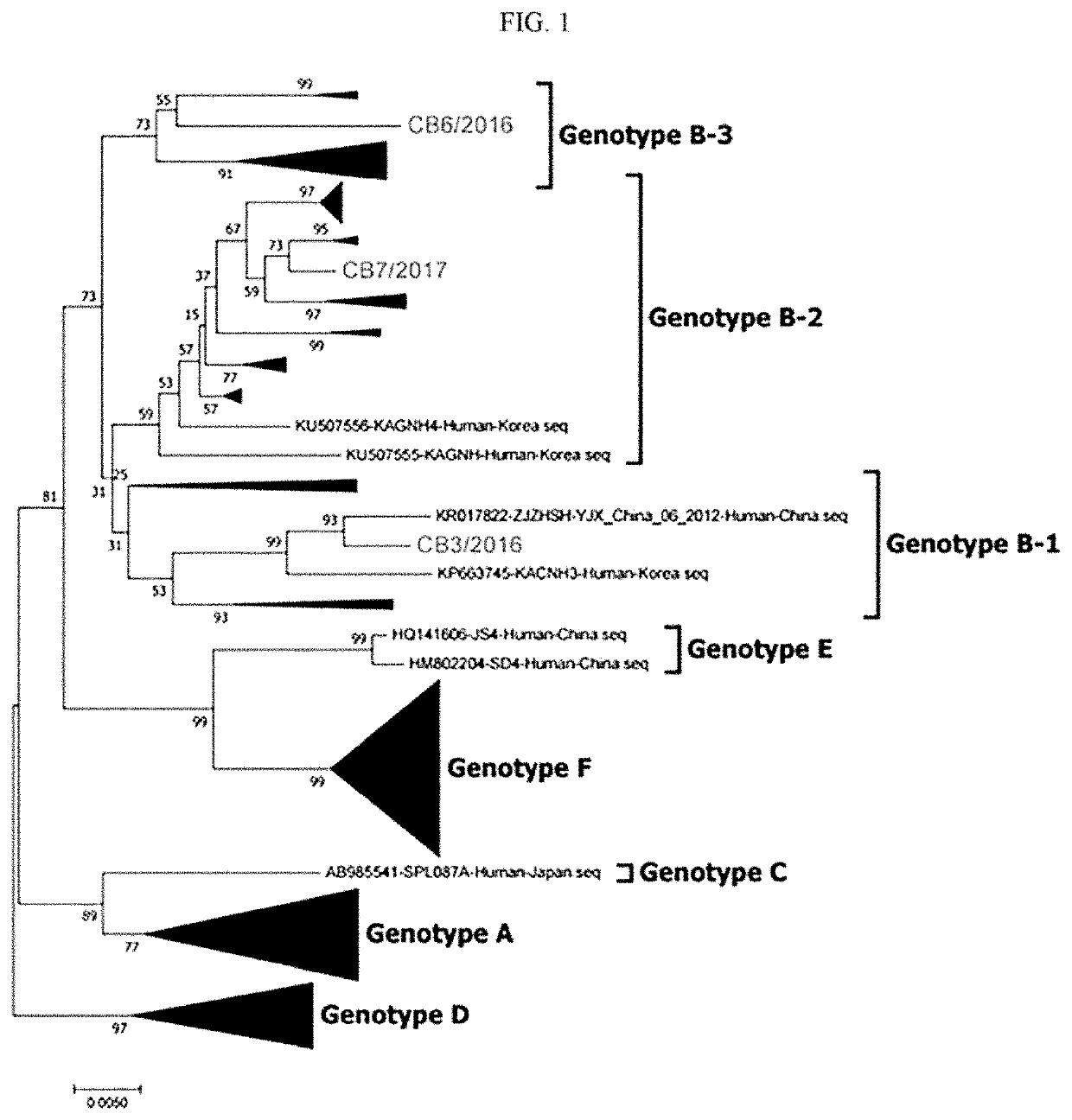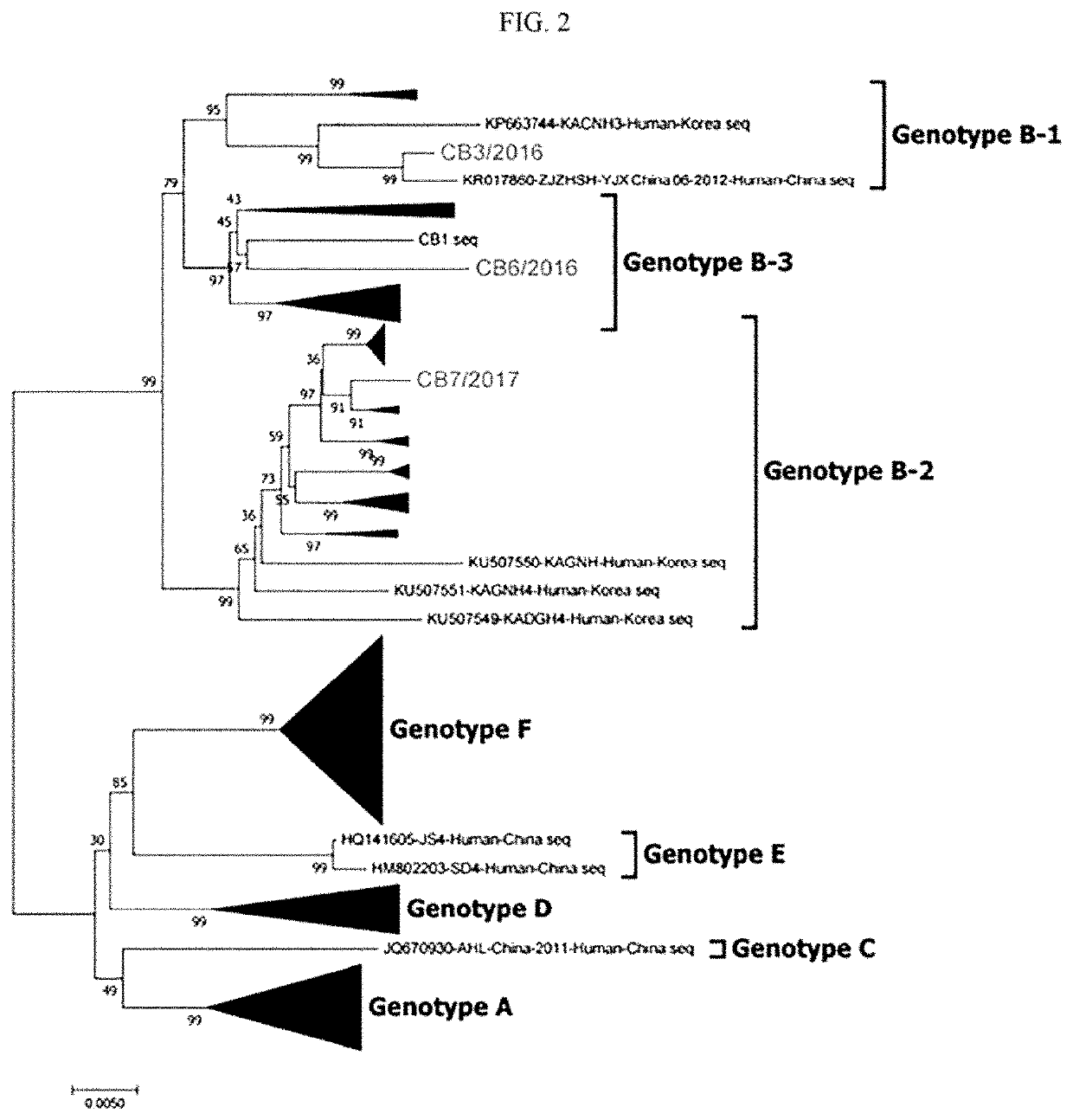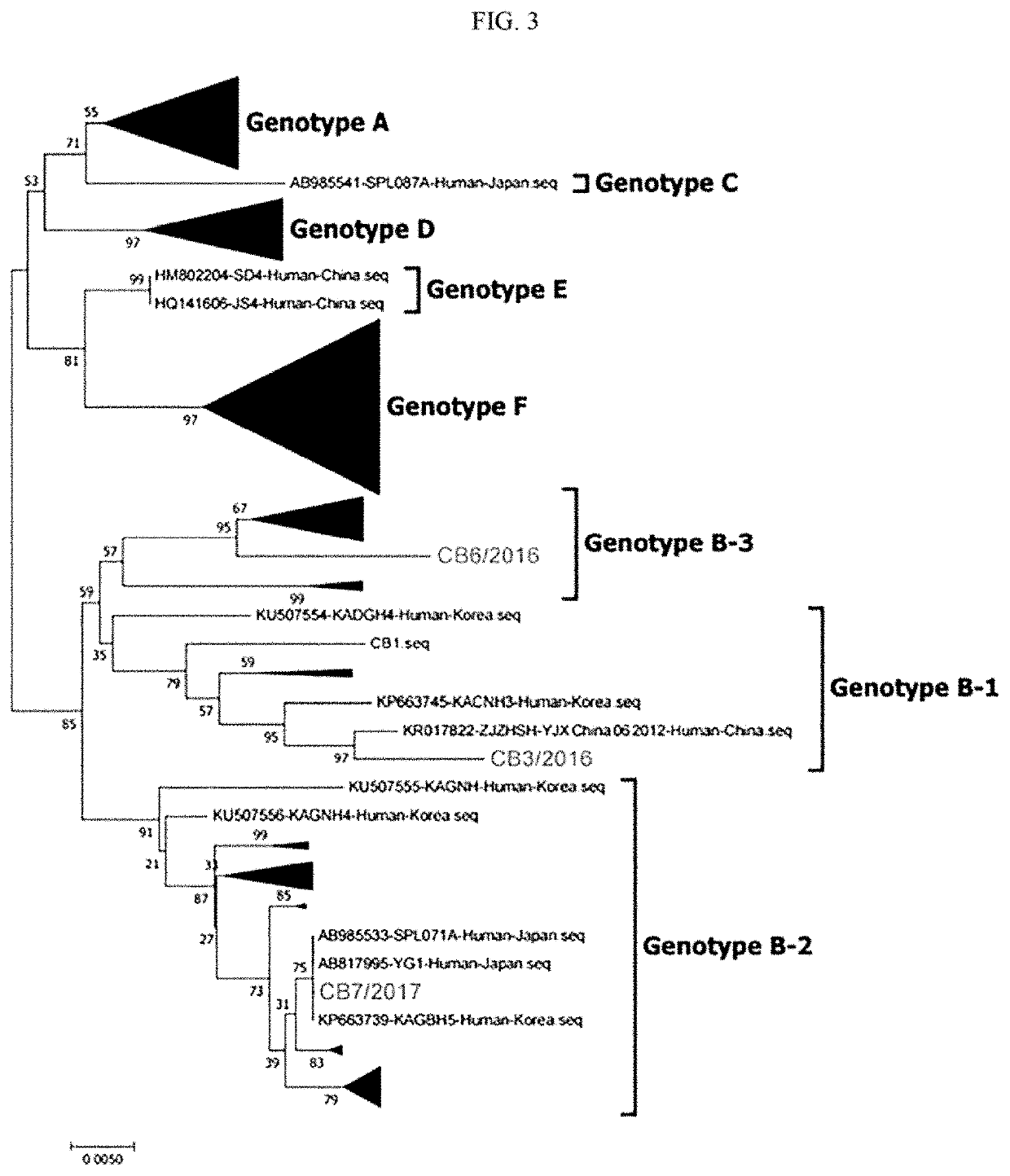Novel severe fever with thrombocytopenia syndrome virus
a thrombocytopenia syndrome virus and severe fever technology, applied in the field of new severe fever with thrombocytopenia syndrome virus, to achieve the effect of limited protective ability and excellent cross immunogenicity
- Summary
- Abstract
- Description
- Claims
- Application Information
AI Technical Summary
Benefits of technology
Problems solved by technology
Method used
Image
Examples
example 1
lation
[0067]Blood from patients who visited university hospitals and were suspected of having symptoms of severe fever thrombocytopenia syndrome, and bloods from animals (goat and abandoned dogs) suspected of having symptoms of severe fever thrombocytopenia syndrome, and wild mite homogenate were used to identify whether the SFTSV (severe fever thrombocytopenia syndrome virus) thereof is positive / negative via real-time PCR, PCR and ELISA analysis. Specifically, a day before virus infection, VeroE6 cells were dispensed into a 12-well plate, cultured so that the cell density exceeded 60%, and the cells were washed with PBS. The cells were treated with 300 μl of serum from a suspected infected patient (serum obtained by centrifuging whole blood at 3000 rpm for 20 minutes) for 1 hour to infect the cells. After the infection, the serum was removed, and the cells were washed with PBS, and then the cells were exchanged with 1% FBS DMEM medium and cultured in 1% FBS DMEM medium for 2 weeks....
example 2
nalysis of Isolated Virus
[0068]The viruses CB3 / 2016, CB7 / 2017 and CB6 / 2016 isolated using Vero E6 cells were respectively reverse-transcribed, and then subjected to PCR, and NGS (next generation sequencing) to identify L, M, S (NP, NS) whole gene sequences thereof. Specifically, RNA was extracted from each virus, and cDNA was produced through reverse-transcription PCR. Subsequently, the L, M, and S genes of each SFTS virus were subjected to PCR to obtain each whole gene. The NGS method was used for gene sequence analysis. The L, M, and S genes of each virus were subjected to tagmentation and index PCR using an illumina nextera XT kit according to the protocol provided from illumina. Afterwards, Fasta Q file of the final sample was generated using the illimina miniseq equipment. The whole gene sequence of the generated file was analyzed using the CLC main workbench program. We integrated the identified gene sequences with the genes of conventional viruses isolated in Korea, China and...
example 3
ation of Differences in Amino Acid Sequence of L, M and S Genes by Viruses
[0069]3-1. L Gene Amino Acid Sequence Difference
[0070]It was identified based on a result of analyzing an amino acid sequence based on the open reading frame (ORF) of each of the L, M and S genes of the viruses of the novel subdivided genotypes B-1, B-2 and B-3 isolated according to the present disclosure, that the L and M genes were different from those in the conventional virus. Specifically, ORF (6255 bp) of an L gene in the B genotype encodes RdRp. In the genotype B-1 virus according to the present disclosure, the 1447-th amino acid of RdRp was valine or the 1913-rd amino acid thereof was lysine. In the genotype B-2 virus and B-3 virus according to the present disclosure, the 1447-th amino acid of RdRp was isoleucine or the 1913-rd amino acid thereof was arginine (FIG. 5A and Table 1).
TABLE 1L geneM geneAmina Adds site1447191383404904B-1 typeValLysTyrThrValB-2 typeIleArgPheThrIleB-3 typeIleArgTyrAlaIle
[007...
PUM
| Property | Measurement | Unit |
|---|---|---|
| Fraction | aaaaa | aaaaa |
| Fraction | aaaaa | aaaaa |
| Fraction | aaaaa | aaaaa |
Abstract
Description
Claims
Application Information
 Login to View More
Login to View More - R&D
- Intellectual Property
- Life Sciences
- Materials
- Tech Scout
- Unparalleled Data Quality
- Higher Quality Content
- 60% Fewer Hallucinations
Browse by: Latest US Patents, China's latest patents, Technical Efficacy Thesaurus, Application Domain, Technology Topic, Popular Technical Reports.
© 2025 PatSnap. All rights reserved.Legal|Privacy policy|Modern Slavery Act Transparency Statement|Sitemap|About US| Contact US: help@patsnap.com



